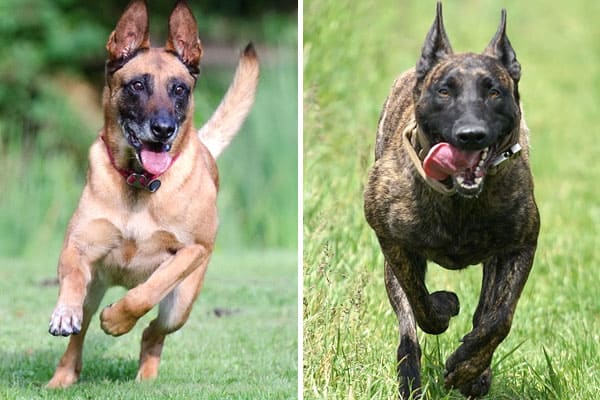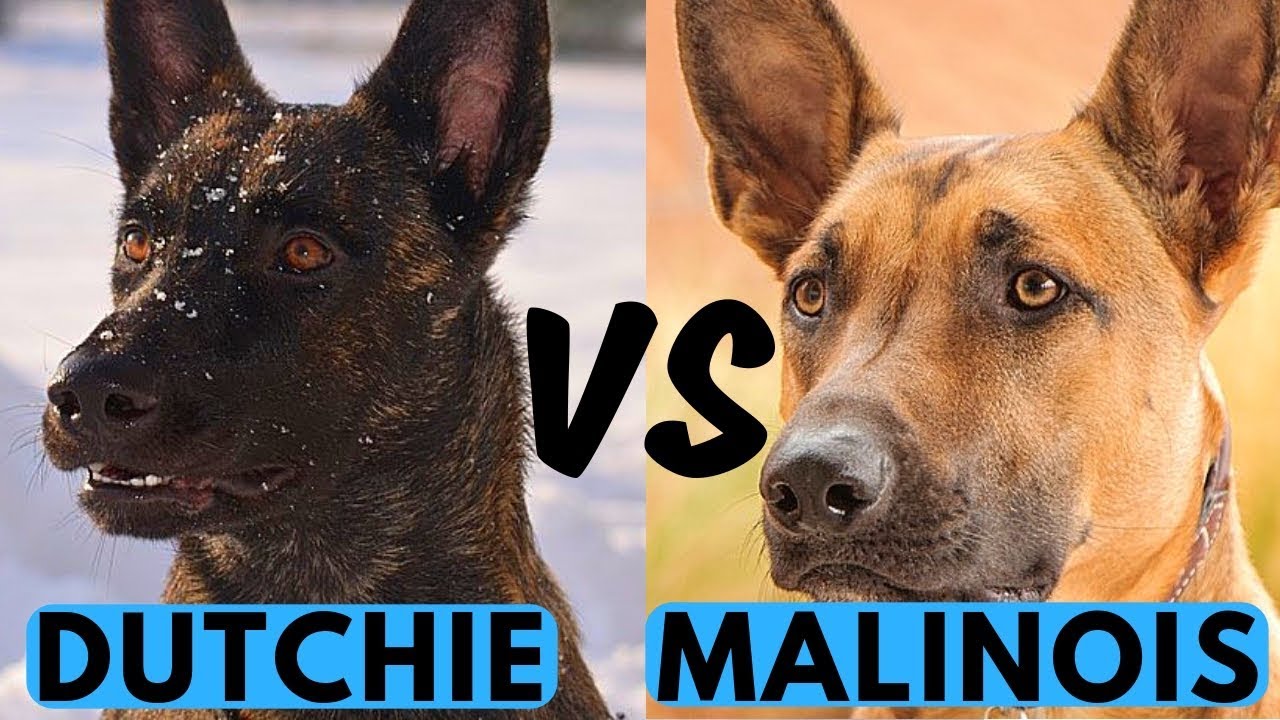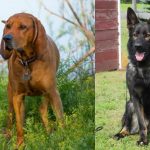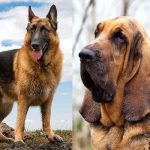Dutch Shepherd History
Contents
The Dutch Shepherd originated from the Netherlands, but it is also one of three variations of the old-world sheepdog. This breed and its descendants were bred for herding and pulling to create a hard-working and intelligent dog capable of working in difficult areas like windy, muddy, arctic conditions. The Dutch Shepherd was originally bred to guard shelters and farm machinery; these days, it is still often enclosed by a fence for security as well as painted as part of its training.
This breed is related to the German Shepherd and Belgian Shepherds; they are similar characteristics such as their famous loyalty, intelligence, and energy. The Dutch Shepherd was developed using northern European herding dogs that were brought into Friesland by the Vikings. It is speculated that the Dutch Shepherd was crossed with other herding breeds to become a better working dog during this time. The Dutch Shepherds used in the development of the breed were medium-sized dogs that had short hair coat with black bodies, tan heads, legs, and tan ears and noses.
Belgian Malinois History
The Belgian Malinois was bred to be a working dog. They are usually used as police dogs, military dogs, and guide dogs for the blind. In addition, especially in the United States, they are used for search and rescue operations. Hailing from Belgium, this smart dog is often seen as an energetic counterpart to his German shepherd relative. He’s cheerful but has a serious side that lends itself well to law enforcement work and serving as a service animal for those with various disabilities or impairment issues. The history of the Belgian Malinois begins in Belgium over 150 years ago.
Difference Between Dutch Shepherd And Belgian Malinois

These dogs are the Dutch Shepherd and the Belgian Malinois. They are both herding dogs, but Dutch Shepherds are used for herding cattle while Belgian Malinois are used for herding sheep. The two breeds have very different temperaments and have to be trained differently due to that temperament. The Dutch Shepherd loves people but is aloof around strangers, while the Belgian Malinois is more outgoing with strangers but not so much with people who they know well. While it’s possible to train these two breeds similarly, their difference in temperament can make it difficult. Both breeds have a calm temperament when they aren’t working, though they tolerate handling less than other herding dogs do because of their broader chests. The Dutch Shepherd has a larger bone structure than the Belgian Malinois does, and its coat is thicker and coarser.
Size
The Dutch Shepherd is a large herding dog with a golden-colored coat and a tail curling over its back. Their tail is normally docked at about half an inch which he is born with. The Dutch Shepherd comes in three sizes, large, giant, and double-giant. The Belgian Malinois has a compact, short coat that comes in black or fawn. Its tail curls over its body as well as it is head.
Belgian Malinois are taller than Dutch Shepherds. Belgium Malinois is significantly taller than the Dutch Shepherd. The Belgian Malinois has a height of about 27 inches, while it can be as low as just over 20 inches for the Dutch Shepherds. Bulldogs are also shorter than both Belgian Malinois and Belgian Shepherds.
Appearance
- Dutch Shepherds tend to have darker coats with tan markings on their legs, while Belgian Malinois tend to have lighter coats with black markings on their legs or dark brown ticks (depending on the specific breed).
- The Dutch Shepherd has a heavier, more muscular built, while the Belgian Malinois is more leggy and slender.
- The Dutch Shepherd tends to be taller at the withers (10-11 inches), while the Belgian Malinois tends to be shorter (9-10 inches).
- The head of the Dutch Shepherd is typically longer in proportion to its body, while the head of a Belgian Malinois tends to be more readily proportionate with its body.
EXERCISE
It also needs considerably less exercise than the Belgian Malinois, only 30 minutes per day as opposed to 60 minutes per day. Though they require less physical exercise per day, both the Malinois and the Dutch Shepherd need regular physical exercise to stay fit. It’s also important to bring them on hikes or long walks. However, since it is used as a working dog, it requires regular mental stimulation as well as socialization and training.
Also Check:Wolfhound German Shepherd Mix
Personality
Both types of dogs have short coats that are solid black or brown with distinct spots or markings on their skin. However, they do differ in the kinds of spots they have on their coats. The Malinois has a patchy coat that is largely black with brown spots. The Shepherds have large spots that are white with brown patches.
Height: The Belgian Malinois is about 17 inches tall, while the Dutch Shepherd is about 16 inches tall.
Weight: Both breeds are small, weighing between 30 and 60 pounds.
Temperament
The two breeds have very different temperaments and have to be trained differently due to that temperament. The Dutch Shepherd loves people but is aloof around strangers, while the Belgian Malinois is more outgoing with strangers but not so much with people who they know well. While it’s possible to train these two breeds similarly, their difference in temperament can make it difficult. Both breeds have a calm temperament when they aren’t working, though they tolerate handling less than other herding dogs do because of their broader chests. In addition, the Dutch Shepherd has a larger bone structure than the Belgian Malinois does, and its coat is thicker and coarser.
Grooming
Both breeds require daily brushing. The grooming routine for a Belgian Malinois is much different compared to the routine followed by Dutch Shepherds. Their coat color should be brushed regularly to prevent tangling and matting; this does not apply to Dutch Shepherds because their hair does not tangle very easily. In addition, the Belgian Malinois needs minimal grooming because their coat is short. They do not shed that much, and their short hair makes them easy to wash. This breed also needs to be bathed twice a month or more if they get into anything that gets on them. The Dutch Shepherd lessens the amount of grooming it needs because its hair is quite long and thick.
Shedding
Both breeds shed significantly throughout the year. However, the Malinois sheds more than the Dutch Shepherd does.
Hypoallergenic
While there are some similarities between Belgian Malinois and Dutch Shepherds, they do share one thing in common. Malinois and Dutch Shepherds are not hypoallergenic dogs.
Price
Belgian Malinois can cost anywhere from $1,000 to $2,000, depending on the breeder. Dutch Shepherds, like Malinois, normally cost around $1,000. It’s crucial to remember that a slew of additional expenses will follow your first investment. Malinois and Dutch Shepherds will incur vaccinations, food, pet insurance, and other expenses.
Dutch Shepherd Vs. Belgian Malinois: Health Issues
There are just three known potential genetic health issues to be cautious of, according to the Dutch Shepherd Association:
- Hip dysplasia
- Eye problems
- Sensitivity to anesthetics
The following are known probable genetic health concerns with the Belgian Malinois breed that you should be aware of:
- Hip
- Issues with the eyes.
Final Words
The two dogs both have similar coat colors, body shapes, and coats. But there are some very important differences between the Dutch Shepherd and the Belgian Malinois. The Dutch Shepherd typically lives to be 12-14 years old, compared to 10-12 for a Belgian Malinois. The Dutch Shepherd is used as a working dog, so it is more powerful than the Belgian Malinois and has more endurance than its counterpart. It also has greater strength and resilience than the Malinois.




